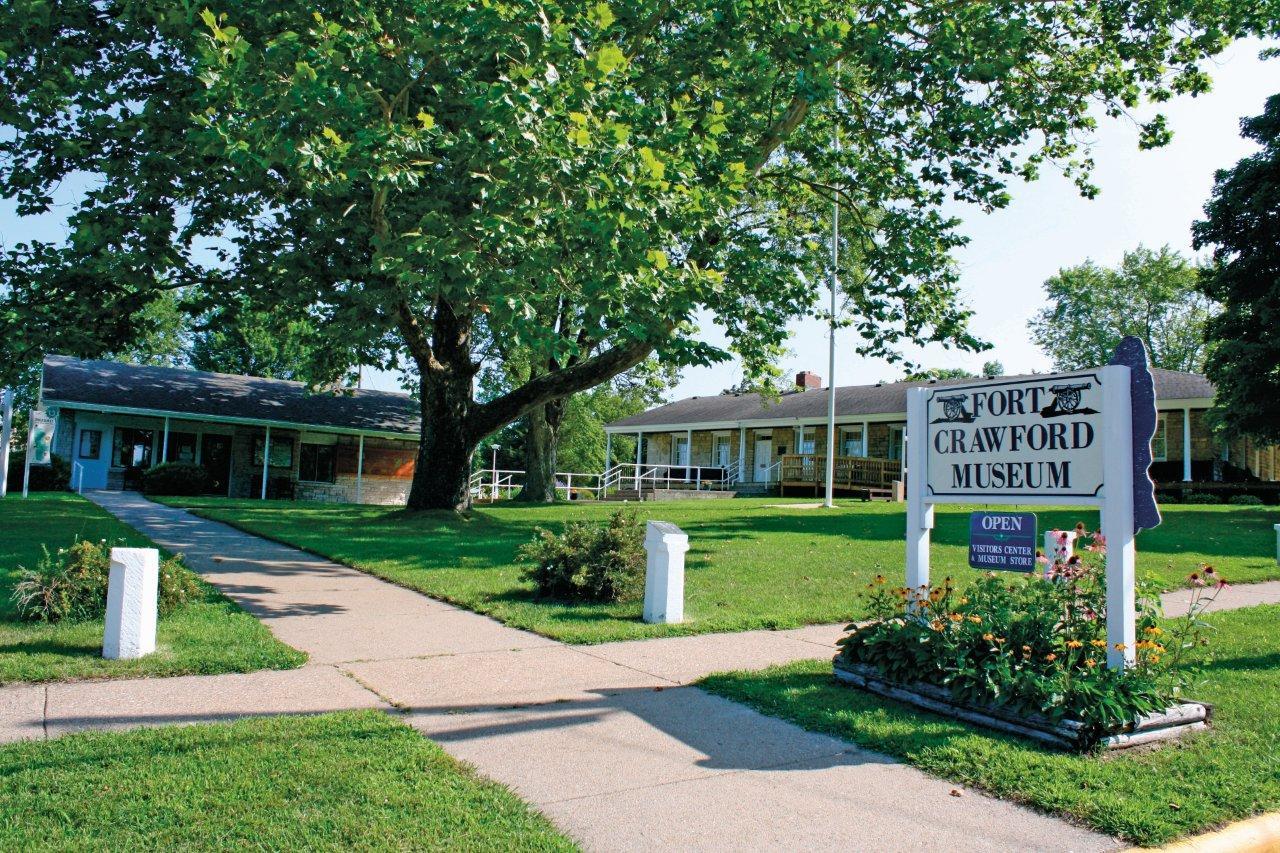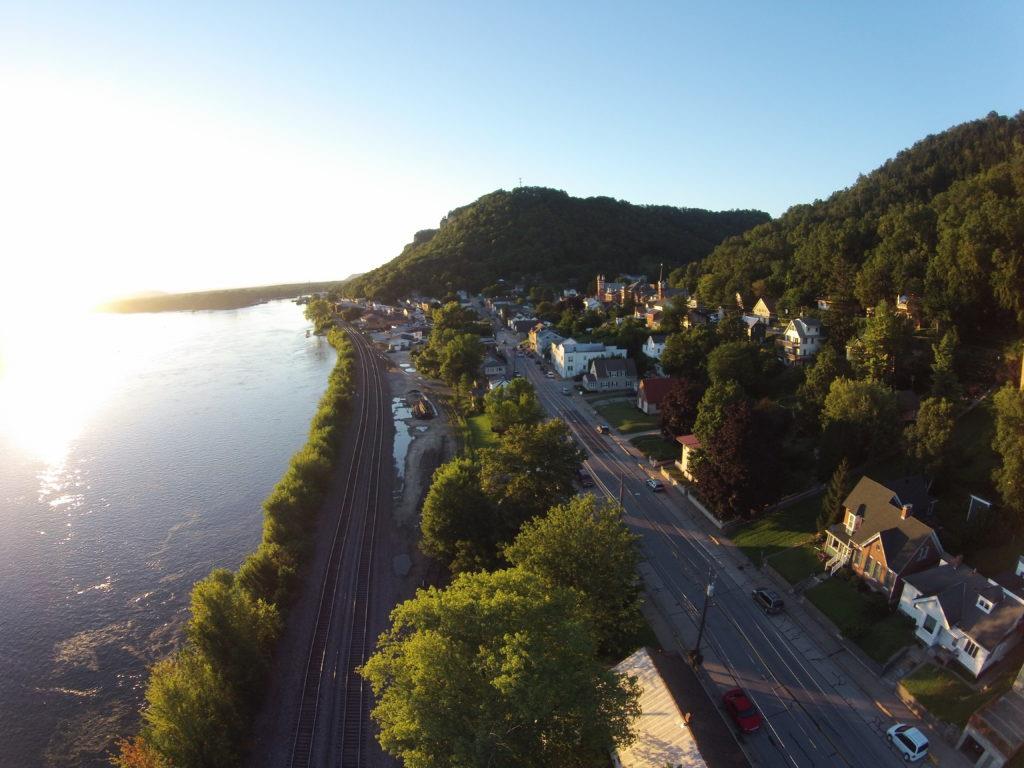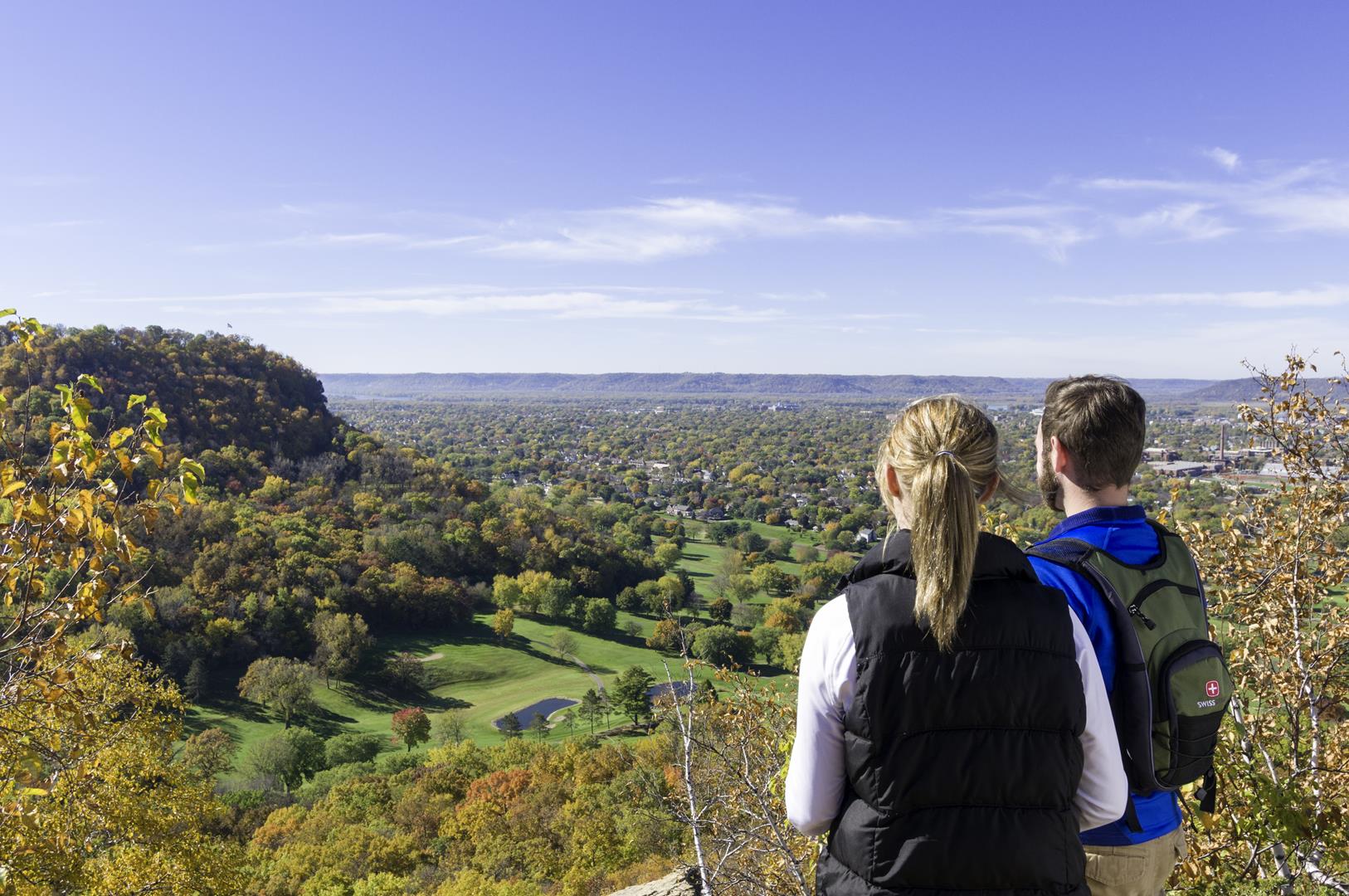Groups following the mighty Mississippi in Wisconsin will encounter opulent mansions, natural beauty and charming small towns
Things to do in Great River Road Wisconsin:
- National Brewery Museum
- Stonefield
- Villa Louis
- Shrine of Our Lady of Guadalupe
- Dahl Auto Museum
- Perrot State Park
Featuring 33 towns to explore, stunning seasonal foliage and scenic bluff-top views, Wisconsin’s Great River Road appeals to group travelers year-round. The beautiful forest landscapes and views of the Mississippi River drew French voyageurs and Native Americans here for centuries, and your group can walk in their footsteps along hundreds of miles of hiking trails found in the area or embark on a scenic boat tour along the river.
Wisconsin’s Potosi and Cassville
Begin your adventure in the town of Potosi—home of the famous Potosi Brewery. Established in 1852 and one of America’s first commercial beer distributors, the building is now on the National Register of Historic Places and is home to the National Brewery Museum. Guests can admire 19th century steins and beer advertisements before embarking on a brewery tour. Guides will explain the brewing process in Potosi’s state-of-the-art facility and sample seasonal creations.
Your group’s next stop will be the nearby town of Cassville, site of Stonefield. This country estate was the property of Nelson Dewey (Wisconsin’s first governor) and contains several preserved buildings for history buffs to explore. The property includes Dewey’s three-story Gothic Revival home in addition to the 1900 Farming Village, which recreates turn-of-the-20th-century life with a schoolhouse, wheelwright shop and blacksmith.

Fort Crawford Museum
Prairie du Chien, Wisconsin
Your next stop is Prairie du Chien, one of the most important outposts of the early American frontier. Native Meskwaki people occupied the valley for hundreds of years before famed French explorers Jacques Marquette and Louis Joliet arrived by canoe in 1673, and the town became a crucial trading post before the construction of Fort Crawford in 1816. Prairie du Chien visitors can tour the fort’s remains and learn about its role as a deployment station during the Black Hawk War of 1832 and Union hospital during the Civil War. Visitors can also tour the fort’s preserved hospital wing to learn about military life and the work of physician William Beaumont, who studied gunshot victims to explore the digestion process.

Villa Louis
Villa Louis on St. Feriole Island will transport visitors to the 19th century as they walk through the Victorian mansion and grounds that belonged to one of Wisconsin’s wealthiest Gilded Age families: the Dousmans. Costumed guides conduct tours through the house in its restored 1890s splendor and will learn about the property’s grand parties, the family’s fur trading fortune and the design by famed Milwaukee architect E. Townsend Mix. The property becomes especially lively every autumn during the Villa Louis Carriage Classic, which welcomes carriage drivers to perform in period-accurate clothing and buggies. Groups looking for a catered meal and a spectacular river view can rent the adjoining Dousman House with its grand ballroom and beautiful views of Lawler Park.
Besides its rich history, Prairie du Chien is also known for its natural beauty and biodiversity. Thousands of ducks, geese and tundra swans migrate through the valley during seasonal changes, and the best viewing location for these birds is Wyalusing State Park. Named for the Munsee-Delaware word meaning “home of the warrior,” this park encompasses over 2,600 acres and features spectacular views of the Wisconsin and Mississippi rivers’ convergence. Groups can admire the valley’s stunning foliage in the fall and view eagles as they nest in February and March. Groups will want to explore Prairie du Chien’s charming downtown, which features cafes and boutiques welcoming to visitors.

Shrine of our Lady of Guadalupe
La Crosse Wisconsin
Continue north to La Crosse, the largest city on the Great River Road. Before visiting downtown, stop to savor the tranquil atmosphere and gorgeous architecture of the Shrine of Our Lady of Guadalupe. A pilgrimage site inspired by the hilltop churches of Tuscany, this complex honors the apparition of the Virgin Mary to the Mexican villager Juan Diego in 1531. Guests orient themselves at the Pilgrim Center before walking the Meditation Trail carved into the hillside (carts are available for guests with mobility issues). Stops along the walk include a votive candle chapel, Stations of the Cross walk and the Memorial to the Unborn—a sacred space that honors infants who died before childbirth. The shrine itself hosts frequent services and is available for tour groups who wish to admire the intricate mosaics and stained glass or pray. The shrine is currently developing a new retreat house that will welcome groups for multi-day stays with dining facilities and social spaces. Further inland is Norskedalen, a nature and heritage center dedicated to preserving the natural environment and cultural heritage of the area surrounding Coon Valley.
Excellent Mississippi River views are also available at nearby Grandad’s Bluff, which offers excellent photo opportunities with the prairie valley below. Descend to downtown La Crosse, a flourishing cultural district known for craft beer and diverse shopping. Orient your group to the area with a Historic La Crosse Trolley Tour, which departs from Riverside Park. An onboard historian will narrate a route that includes the Old Towne North neighborhood, University of Wisconsin-La Crosse and the Pearl Street—La Crosse’s bustling main street. As your trolley returns to Riverside Park, consider the sightseeing expeditions offered by La Crosse Queen Cruises. Daily excursions showcase the region’s cliff-sides and bridges, and special dinner and brunch cruises can be offered along with live music. Riverside Park also offers a spectacular display during the holiday season with over four million twinkling lights.
Disembark from your cruise and walk through the vibrant downtown, which is filled with galleries, theaters and coffee shops to explore. La Crosse famously has more bars per capita than any American city, and Pearl Street is filled with wine bars and taverns to entice your group. Classic car fans will want to spend time in the Dahl Auto Museum, which celebrates the Dahl family’s involvement as automotive dealers spanning over 100 years and five generations. The showroom houses a Thunderbird, Crown Victoria and 1911 Ford Model T Roadster as well as a century-old collection of automobile memorabilia.

Fountain City
North of La Crosse is Perrot State Park, a migratory bird habitat and excellent example of southern Wisconsin’s driftless region. During the last ice age, retreating glaciers deposited a blend of silt, clay and gravel called drift that was unevenly distributed in modern-day Wisconsin and northwestern Illinois, resulting in the hilly and “driftless” appearance of the landscape. A guide can explain this geological phenomenon and guide groups on the short trail to Brady’s Bluff, which overlooks the entire valley. Nearby Fountain City is home to the Kinstone Megalithic Garden, a 30-acre peaceful haven filled with stone sculptures, restored native prairie and Mississippi River views. Visitors can reflect on a labyrinth trail, learn about marshland preservation and pose for photos in the rock arrangements that resemble Stonehenge and were collected from local cliffsides.
Several quirky roadside attractions are easily accessible off the Great River Road for group members with a craving for kitsch. Prairie Moon outside of Fountain City is a collection of nearly 40 stone sculptures that came from the mind of retired farmer Herman Rusch. The property includes a massive 260-foot arched fence, a Hindu temple, dinosaurs and a miniature mountain. Other similar stone gardens include Wegner Grotto in Cataract (which features a Glass Church comprised of encrusted church mosaic shards) and Dickeyville Grotto (home to sculptures of religious figures covered in shells and stones).
Further upstream is the small town of Pepin, notable as the birthplace of Little House on the Prairie author Laura Ingalls Wilder. The Laura Ingalls Wilder Museum includes furnished rooms accurate to the period, a covered wagon and a rare reed organ from 1882. Conclude your adventure in the city of Prescott, which lies at the confluence of the St. Croix and Mississippi rivers. Stop by the Great River Road Visitor & Learning Center, a free museum and discovery center that includes scopes for seasonal birdwatching, a butterfly garden and views of Minnesota across the river.
For activity ideas on your next trip Subscribe for FREE to our newsletter.






